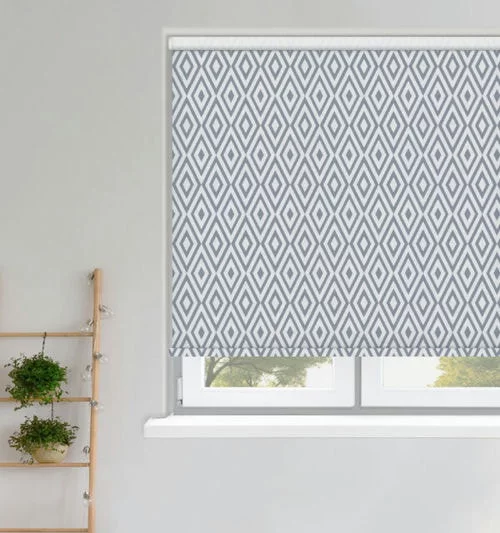
This classic blue hue adds a calm and timeless touch to any room. Its versatile shade pairs beautifully with both light and dark colour schemes, offering a serene and balanced atmosphere. Whether used in a modern, coastal, or traditional setting, blue blinds provide a refreshing pop of colour while ensuring effective light control.
Roller blinds are a practical option for your windows, versatile enough to suit just about any room. Sleek and clean, they fit well with modern homes, without the bulk of other options. Roller blinds give your windows a variety of useful looks depending on how they are rolled up—fully, partially, or completely closed.
Available in a vast range of fabrics, colours, and patterns, our roller blinds can be customised to match any decor, whether you’re looking for something subtle or a bold statement piece. Whether you need blackout blinds for the bedroom, sheer options for the living room, or something in between, our collection has something to suit every style and function.
Wipe Clean: No
Flame Retardant: No
Antibacterial: No
Machine Washable: No
Dimout (1-5, 5=Blackout Fabric): 5
Energy Saving (1-3, 1=Most Efficient): 2
Moisture Resistant Fabric: No
UV Block: 100
Border Print: No
Design: Lightfiltering, Patterned
Range:Roller Blinds
Please Note:
• All measurements should be provided in cm or mm.
• All our blinds are made with a 0.5cm (5mm) manufacturing tolerance (width & drop).
• Always use a metal tape measure when taking the measurements.
Recess Size
This is the measurement you need to make if the blind needs to fit inside the window recess.
Measure the width and the drop in three different positions ensuring you provide us with the smallest measurement.
We will make any necessary deductions to ensure the blind fits neatly within the recess of the window.
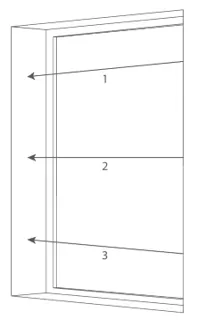
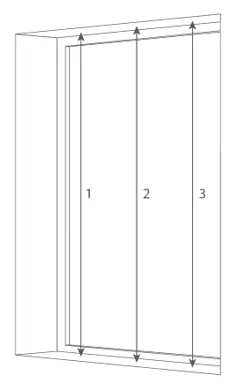
Exact Size
An exact size blind is also known as ‘pin width’ or ‘finished blind width’. This is the measurement you need to make if the blind needs to hang outside the recess overlapping the window.
Decide how much you wish to overlap the recess at each side, we recommend at least 7.5cm (75mm) at each side as well as the top and bottom so as to minimise as much external light as possible.
Measure the width and the drop in three different positions ensuring you provide us with the smallest measurement. We will not make any deductions from the measurements provided.
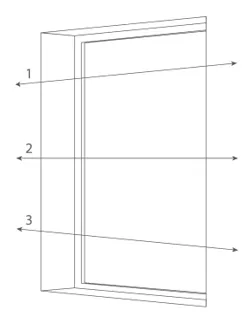
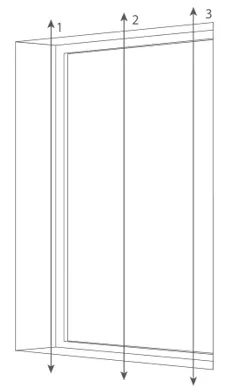
Top tip for blackout blinds
Our fabric experts recommend when ordering a blackout blind, you fit this outside the window recess using the ‘exact’ blind measurement thus ensuring as much external light as possible is blocked out.
Top tip for vertical blinds
The headrail is included in the drop of the blind therefore the louvres will be shorter than the drop.
The following Tools / Hardware are required to install a roller blind.
Metal tape measure, Drill, Philips screwdriver, Stepladders, Drill bit and Pencil.
Choose how to mount the brackets
Select the method of mounting that is most suitable for you, top mount or face mount.
Note.
Do not mount the brackets to the side wall.
Top mount
Top mount to an overhead surface such as the top of the window recess.
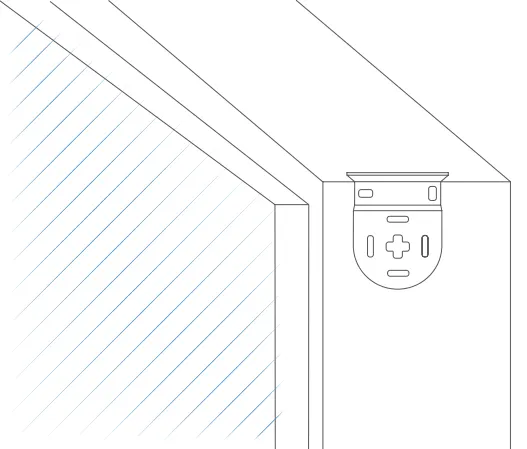
Face mount
Face mount to the face of outside the window frame.

Deciding where to mount the brackets
Position brackets to allow free operation. Ensure that the position of the brackets is such that the roller blind can operate without coming into contact with any window, door handles, or any other obstacles. Loosely position both brackets on the blind and position in the window where the blind will be fitted. This will give you a better indication of where the brackets will go and make it easier to centre the blind.
Note that the spring operating pin on the pin sidemechanism should be slightly depressed (ideally halfway in) when the installation is complete.
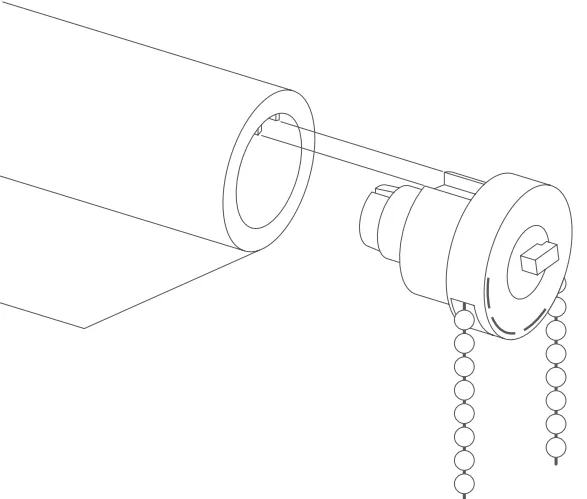
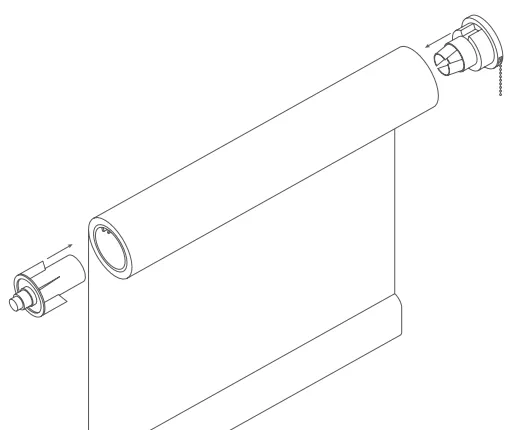
Attaching the operating mechanism
Ensure you have positioned the blind the correct way, then choose the end of the roller blind you wish the controls to be on. Insert the control side mechanism onto that end of the tube, making sure the two ribs on the inside of the tube slot are inside the cut-out of the control side mechanism. At the other end of the roller blind insert the pin side mechanism.
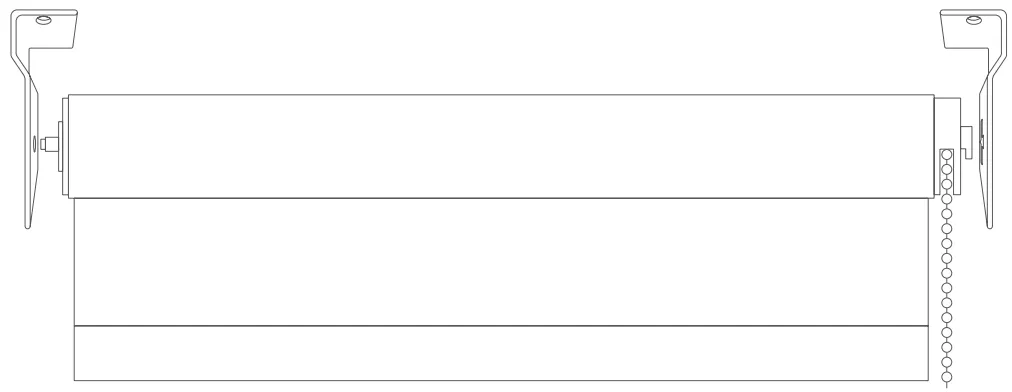
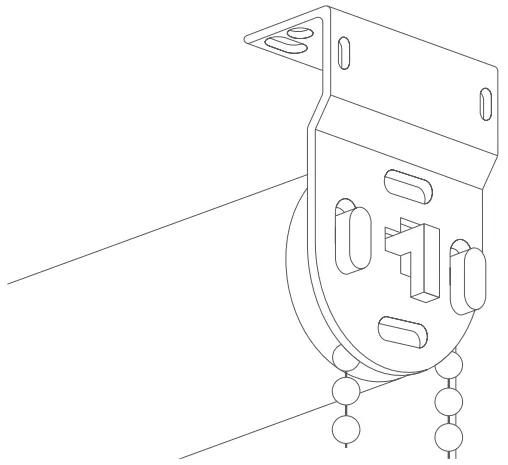
Fitting the control side bracket
Place the control side bracket on the same side fo the clind as the chain control mechanism. Mark the position of the first bracket, making sure that it is level and not twisted, as this will stop the blind operating correctly. Drill holes and fix bracket into place, using rawl plugs if fitting to a wall. Insert one side of the blind in the mounted bracket. Then place the other bracket on the other end of the blind and mark its position. Ensure that the second bracket is marked so that it is level with the first. Drill the holes and fix the bracket in place, using rawl plugs if fitting to a wall.
Mounting your blind.
Insert the pin side of the blind into the pin side bracket. The pin end of the blind has a spring operation to facilitate mounting and un-mounting the blind. Insert the control mechanism into the control side bracket as shown. The central lug on the control side mechanism should point downwards and locate into the cross section of the bracket, hooking in place.
Operating your blind
Once installed, use the operating chain at the side to raise and lower your blind.
P Clip
The device must be installed at maximum distance possible from the control mechanism to prevent the looped cord/chain from becoming slack.
1. Ensure the control chain is inside the P-Clip.
2. Ensure the chain is taut and that the P-Clip is at the bottom of the loop and that the chains are able to manoeuvre properly.
3. Screw the tensioning device to a wall adjacent to the blind ensuring that the chain remains taut. The chain will be held permanently taut and under constant tension.
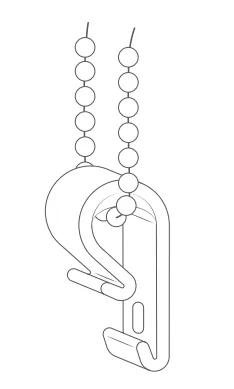
Warning
Young children can be strangled by loops in pull cords, chains, tapes, and inner cords that operate the product.
To avoid strangulation and entanglement, keep cords out of the reach of young children. Cords may become wrapped around a child’s neck. Move beds, cots and furniture away from window covering cords. Do not tie cords together. Make sure cords do not twist and create a loop.